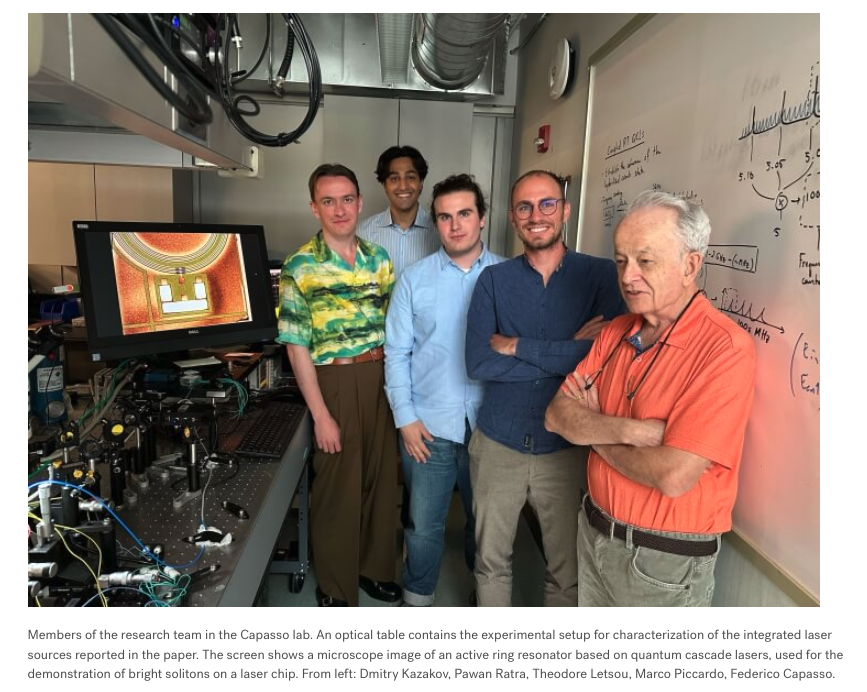日本語で読みたい方は、 google chromeで開き、
画面上で右クリックをして、「日本語に翻訳」をクリックしてください
Physicists in the Harvard John A. Paulson School of Engineering and Applied Sciences(SEAS) have created a compact laser that emits extremely bright, short pulses of light in a useful but difficult-to-achieve wavelength range, packing the performance of larger photonic devices onto a single chip.
Published in Nature, the research is the first demonstration of an on-chip, picosecond, mid-infrared laser pulse generator that requires no external components to operate. The device can make what’s called an optical frequency comb, a spectrum of light consisting of equally spaced frequency lines (like a comb), used today in precision measurements. The new laser chip could one day speed the creation of highly sensitive, broad-spectrum gas sensors for environmental monitoring, or new types of spectroscopy tools for medical imaging.
The paper’s senior author is Federico Capasso, the Robert L. Wallace Professor of Applied Physics at SEAS and the Vinton Hayes Senior Research Fellow in Electrical Engineering. Supported by the National Science Foundation and the Department of Defense, the research was a collaboration with the Schwarz group at Vienna University of Technology (TU Wien); a consortium of Italian scientists led by Luigi A. Lugiato; and Leonardo DRS Daylight Solutions led by Timothy Day.
“This is an exciting new technology that integrates on-chip nonlinear photonics to generate ultrashort pulses of light in the mid-infrared; no such thing existed until now,” Capasso said. “What’s more, such devices can be readily produced at industrial laser foundries using standard semiconductor fabrication.”

この情報へのアクセスはメンバーに限定されています。ログインしてください。メンバー登録は下記リンクをクリックしてください。

